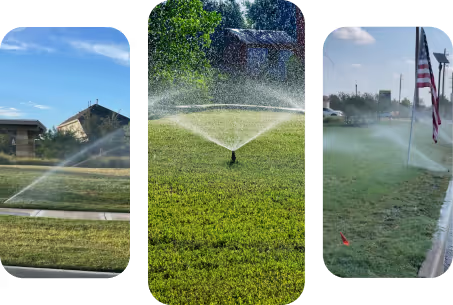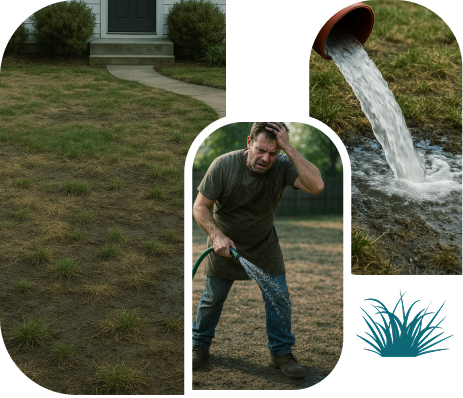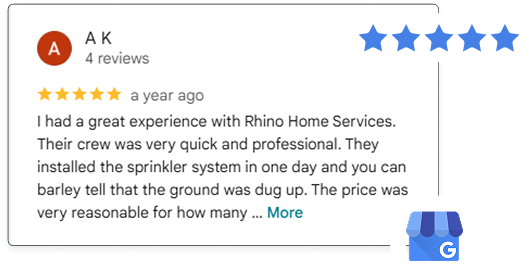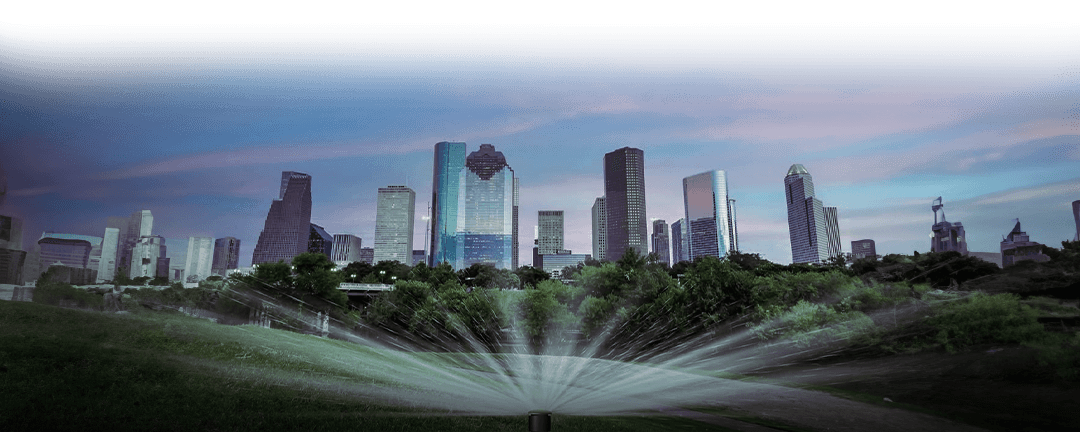Best Sprinkler System for Texas Lawns (Complete Buyer’s Guide)

Keep Your Lawn Thriving in Houston's Heat
Texas lawns face intense heat, unpredictable rain, and diverse soil types making the right sprinkler system essential for a lush, green yard year-round. In this guide, you’ll learn how to choose the best sprinkler system for your property, compare popular options like rotor and pop-up heads, and discover installation tips from Houston irrigation experts.
Why You Need a Sprinkler System for Texas Lawns
Manual watering isn’t just time-consuming, it leads to uneven coverage and wasted water. Installing an automated in-ground sprinkler system helps you:
- Ensure consistent, even watering across your entire lawn.
- Reduce your monthly water bill with zone-based control.
- Protect your landscape during heatwaves and droughts.
- Save time with automated schedules and Wi-Fi-enabled controllers.
Key Factors When Choosing a Sprinkler System
Selecting the right system means considering your property’s layout, local climate, and soil composition:
- Climate Adaptability: Texas heat demands sprinklers resistant to UV exposure and high temperatures.
- Water Pressure: Match your system to your home’s pressure (PSI). Rotor heads work best for medium-to-high pressure areas.
- Soil Type: Sandy soil drains quickly ideal for slower, steady watering. Clay soil needs adjustable nozzles to avoid runoff.
- Yard Size & Shape: Pop-up heads suit smaller lawns, while rotor systems cover wide or irregular areas efficiently.
- Smart Controls: Modern controllers with rain sensors prevent overwatering and adjust automatically to weather patterns.
Best Sprinkler System Types for Texas Homes
1. Rotor Sprinklers (Best for Large Lawns)
✅ Long-distance spray with even rotation
✅ Great for wide, open areas
❌ Require higher water pressure
2. Pop-Up Spray Heads (Best for Small to Medium Yards)
✅ Compact, even spray pattern
✅ Retract when not in use
❌ Can overwater if not properly calibrated
3. Drip Irrigation Systems (Best for Gardens and Flower Beds)
✅ Delivers water directly to roots
✅ Reduces evaporation and runoff
❌ Not ideal for turf areas
4. Smart Sprinkler Systems (Best for Efficiency)
✅ Automatically adjusts schedules by weather
✅ Compatible with Wi-Fi controllers and sensors
❌ Higher upfront investment
Understanding Texas Soils and Water Coverage
Houston lawns commonly have clay-heavy or loamy soil, requiring systems that distribute water gradually to avoid pooling. For even coverage:
- Install zones by area and plant type.
- Maintain consistent pressure regulation.
- Use rotary nozzles for gentle distribution.
- Include rain sensors to avoid waste after storms.
Installation and Cost Overview in Houston
At Rhino Home Services, a professional sprinkler system installation typically includes:
- 6–10 irrigation zones, covering front and backyard areas.
- Full package: Controller, wiring, pop-up heads, rotor heads, backflow preventer, labor, and customer training.
- Pricing:
- 6–8 zones: $3,000–$4,000
- 8–10 zones: $4,000–$5,000
- Over 10 zones: $5,500+
Most systems take 1–2 days to install, depending on lawn size. Rhino’s team handles 811 line marking, trenching (4–8 inches deep), and provides a 2-year warranty with optional Wi-Fi controller add-ons.
Maintenance Tips for Long-Lasting Performance
- Inspect heads monthly for clogs or misalignment.
- Adjust watering schedules each season.
- Clean nozzles with a fine brush to maintain flow.
- Protect the backflow preventer during winter freezes.
- Trim grass around heads to ensure full spray coverage.
Recommended Setup for Houston Homeowners
For most residential properties, a Rain Bird system with a smart controller, rotary heads, and rain sensor offers the best balance of efficiency and durability. It handles clay soils well and adapts easily to Houston’s heat.
Final Thoughts
Choosing the right sprinkler system ensures your Texas lawn stays lush, efficient, and resilient year-round. Whether you have sandy soil in Katy or clay soil in Cypress, investing in a durable, automated sprinkler system saves time, money, and water.
Ready to install?
Rhino Home Services provides licensed, insured, and warrantied sprinkler installations across Houston. Contact Rhino today for a free estimate and get your yard summer-ready with a custom irrigation system built to last.
Get a Free Estimate
Want a lush lawn without dragging hoses? Our licensed, insured Houston team installs efficient, code‑compliant systems, backed by a 2‑year warranty and a friendly walkthrough so you’re confident from day one.
Get a Free EstimateFrequently Asked Questions
A well-installed sprinkler system typically lasts between 10 to 15 years with proper maintenance. Components like nozzles or valves may need replacement sooner, especially in areas with hard water or frequent freezes.
During summer, most Texas lawns need 1 to 1.5 inches of water per week. Split watering into two to three sessions to prevent runoff and encourage deep root growth.
Rotor sprinklers rotate streams of water and are ideal for large areas, while spray sprinklers emit a fixed fan-shaped pattern suited for smaller spaces or flower beds.
Yes, smart controllers use weather data and soil moisture sensors to adjust watering schedules automatically, reducing water waste by up to 30% annually.
Installation prices vary by yard size and number of zones. On average, expect to pay between $3,000 and $5,000 for a professionally installed system in the Houston area.















